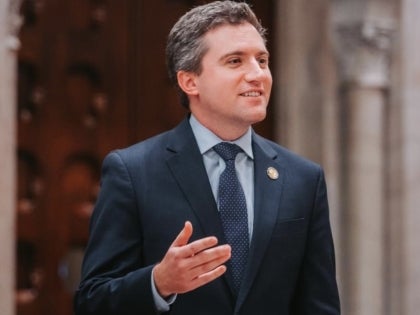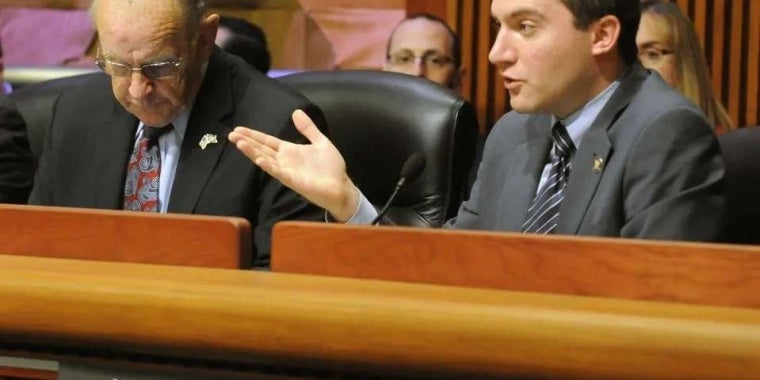
A mixed bag on IDA reform in Albany
The push to reform New York’s industrial development agencies gained significant momentum this year, but not enough to net a serious win for the coalition of labor unions, teachers and good government groups backing the effort.
Smaller measures, however, did make it over the finish line, including one expanding representation on IDA boards and another increasing transparency over agency projects.
“The momentum is building and we’re going to continue to build that momentum,” said state Sen. Sean Ryan of Buffalo. “But the community itself is building it.”
IDAs, of which there are 107 across the state’s counties, cities and towns, have the power to grant property, sales and mortgage tax breaks to companies in exchange for promised jobs and future tax revenue.
Based on the size of a company’s project, IDA tax breaks can be negligible or total $100 million or more, as they did for Amazon’s 3-million-square-foot warehouse in the Town of Niagara ($124 million) and Plug Power’s hydrogen generation facility in Genesee County ($119 million).
The big push in Albany this year was for a bill, sponsored by Ryan, that would prevent IDAs from granting property tax breaks where the revenue would otherwise flow to a local school district. Those tax breaks account for about 60 percent of IDA abatements, according to the good government group Reinvent Albany. The bill would have “a huge effect on the IDAs because they can’t give away nearly as much money,” said Reinvent Albany Executive Director John Kaehny.
The bill failed to make it out of committee for a third year in a row. The proposal, however, gained powerful backers this year in the New York State United Teachers, AFL-CIO and other unions.
“All of the research is showing that [IDAs] overpromise and underperform in terms of actual job creation,” NYSUT president Melinda Person said at a February press conference in support of the bill. “That is what makes this doubly insulting — that we are not even getting the jobs we were promised on top of the impact and cuts to schools.”
The bill, Kaehny added, is “a huge threat to the way IDAs do business.”
“The IDAs and the IDA industry, which includes their consultants, ferociously lobbied against it.”
That IDA industry includes the New York State Economic Development Council, a trade group that lobbies for IDAs, as well as law firms that write and process the tax break deals.
“Any time you try to change the IDAs you get a lot of stiff resistance, but we’re going to keep pushing,” Ryan told Investigative Post.
IDAs and the New York State Economic Development Council oppose Ryan’s bill, arguing that less IDA activity results in fewer jobs and less investment in municipalities. IDA leaders also argue that the payments-in-lieu-of-taxes deals they approve actually increase tax revenue to schools because projects wouldn’t happen without IDA assistance.
Some economists, however, dispute that belief.
Corey Wiktor, executive director of the Cattaraugus County IDA, said reducing his agency’s ability to grant property tax breaks could have a chilling effect on the local economy. He said if lawmakers came up with a way to reduce tax breaks but promote business development, he’d be OK with that.
“I ask if it goes away, what tools do we have? I don’t know that answer,” Wiktor said. “If you take away the three tools, property, sales and mortgage tax breaks, are you more competitive today or less?”
“If the secret sauce is without IDAs, then what’s the secret?” he added. “What tools are in our box? What tools would Sen. Ryan propose?”
Another, more limited, reform bill did pass, however.
Sponsored by Yonkers Democrat Sen. Shelley Mayer, the legislation requires IDAs to appoint a representative of a labor union and a representative of a local school district to their board of directors and aims to make the agencies “more open and responsive to the communities they serve.”
Some IDAs, like Erie County, already include a labor representative and a school representative. Others do not. It’s not yet clear if Gov. Kathy Hochul will sign the bill into law. A spokesperson for the governor did not respond to a request for comment.
“The ECIDA Board makeup has included a labor representative and the President of the Erie County Association of School Boards since 1997, and their contributions have proven invaluable,” John Cappellino, president and CEO of the Erie County IDA, said in a statement. “Their participation offers helpful, insightful perspectives regarding ECIDA policies and project review.”
Ryan and Albany watchdogs said Mayer’s bill was a step in the right direction but that additional reforms are needed.
“It’s a good bill but it’s not the end of the sentence,” Ryan said. “We also need to do the bill limiting the amount of revenue IDAs can give away.”
Additionally, the state budget this year included $250,000 to create a local ‘database of deals’ to increase transparency of IDAs. The money will allow the Authorities Budget Office, which monitors and oversees the agencies, to better track property tax breaks, payments-in-lieu-of-taxes deals and housing projects undertaken by the IDAs. The work is expected to be completed by 2025.
Despite the mixed bag on IDA-related legislation, advocates say they’ll keep pushing for Ryan’s reform bill to pass.
“As someone who is used to pushing rocks uphill for a living … I’m cautiously optimistic that we can continue to make some serious headway on reforming IDAs as we continue into the future,” said Ron Deutsch, head of New Yorkers for Fiscal Fairness, a labor-backed advocacy group.
IDAs have come under fire in recent years for their impact on municipal and school tax bases. A 2015 rule from the Governmental Accounting Standards Board required school districts and local governments to report for the first time how much revenue they did not collect due to tax breaks each year.
Washington D.C.-based Good Jobs First, a subsidy watchdog group, then used data generated from that rule change to report that New York schools lost a collective $1.8 billion to tax abatements in 2021.
Using the same data, Investigative Post found a handful of Western New York districts — largely in rural areas — that lose millions in revenue each year due to IDAs.
That reporting caught the attention of public employee unions, the AFL-CIO and the New York State United Teachers, who joined Good Jobs First, Reinvent Albany, Ryan, state Sen. James Skoufis of Orange County and Assembly Member Harry Bronson of Rochester in pushing for IDA reform this year. Skoufis last year won a budget provision to place an independent monitor over the Orange County IDA, of which he’s been a vocal critic.
A subsequent report from Good Jobs First and Reinvent Albany highlighted the “perverse incentive” IDAs have to grant tax breaks: The agencies collect hefty fees from the companies they grant the subsidies to. Investigative Post found that nine of the 12 IDAs in Western New York receive a majority or all of their annual operating costs from the fees.
The two watchdog groups then released a report detailing the millions of dollars law firms like Rochester-based Harris Beach and Buffalo-based Hodgson Russ earn from IDAs.
Investigative Post has also reported that some IDAs are looking to subsidize housing projects, another move that has drawn criticism from officials and watchdogs. Some even said the practice was not legal. Legislation introduced this year by Long Island state Sen. Monica Martinez that would have made it explicitly legal for IDAs to grant housing developers tax breaks failed to go anywhere.
Kaehny said more school boards from more school districts will have to sign on if IDAs will ever be reformed.
“It’s probably going to take a grinded-out effort by people in many, many school boards across New York state over the course of years to finally make this happen,” he said. “It will, it’s just going to be a slugfest because this is the public interest versus pay to play.”
“And in Albany, pay to play is usually stronger.”

